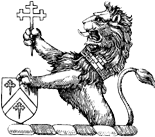
Zhivago’s Women & the Moral Vice of Our Time
PAINTED-OVER MOTIVES
This year marks the 60th anniversary of director David Lean’s Doctor Zhivago. Released just before Christmas in 1965, the movie went on to become a classic, still watched six decades later. Britain’s Granada TV produced a version in 2002, and Russian director Alexander Proshkin did the same — more faithful to Boris Pasternak’s novel — in 2006. But Lean’s film, starring Omar Sharif in the lead role, remains the real Doctor Zhivago for millions worldwide.
Doctor Zhivago in some ways marks the end of the film industry’s making great epics for public consumption. Lavish, big-budget, multi-hour extravaganzas about human history — from The Ten Commandments in 1956 to The Sound of Music, released the same year as Zhivago — were going away. Fiddler on the Roof, released in 1971, was among the last of these types of features.
Set in Russia in 1914-1924, Doctor Zhivago chronicles the fate of that country as it transitioned from disastrous involvement in World War I to the internal struggles that led to the Bolshevik Revolution of 1917 and subsequent civil war. Pasternak’s book was smuggled out of the Soviet Union, where it had been banned, and published in Italy in 1957. Anybody who reads it discovers the protagonist is not the suave, romantic dude portrayed in the film. Lean turns Zhivago into a somewhat likeable character, maybe even a sex symbol. The lead woman in the film is not Zhivago’s wife but Lara Antipova, his sometime concubine (played by Julie Christie). His wife, Tonya Gromeko, largely fades away, finally disappearing into French exile. In some ways, Doctor Zhivago retains popular appeal because it embodies a vision of love, sex, and marriage that, though controversial in its day, slowly acquired a wide following. In 1965 viewers would have recognized Zhivago for what he is: an adulterer. How readily would that term come to the contemporary viewer’s mind?
Zhivago lives amid tragic circumstances. Russia, which had already been rattled by revolution in 1905, was rent by World War I. The March Revolution of 1917 forced out the czar and brought the Provisional Government to power, which in turn was forced out by the Communists that November. Ongoing war between the Communists (Reds) and everybody else (Whites) lasted through 1923, its height being 1918-1921, the years during which much of Doctor Zhivago takes place. But national political circumstances are no excuse for how Zhivago treats the women in his life. Let’s consider them.
You May Also Enjoy
When the Apostles, with Spirit-led courage and Christ-like mercy, boldly lifted the full yoke of the law from the disciples' shoulders, they retained sexual morality.
U.S. media and the American judicial system will gladly go after a high-ranking Catholic priest or bishop but will run cover for powerful Hollywood directors and actors.
The change in Pius XII's reputation was not an organic result of honest inquiry. Something else was at play.

